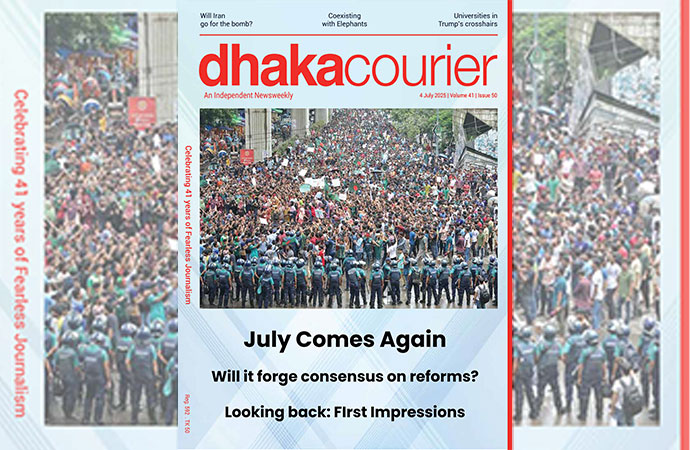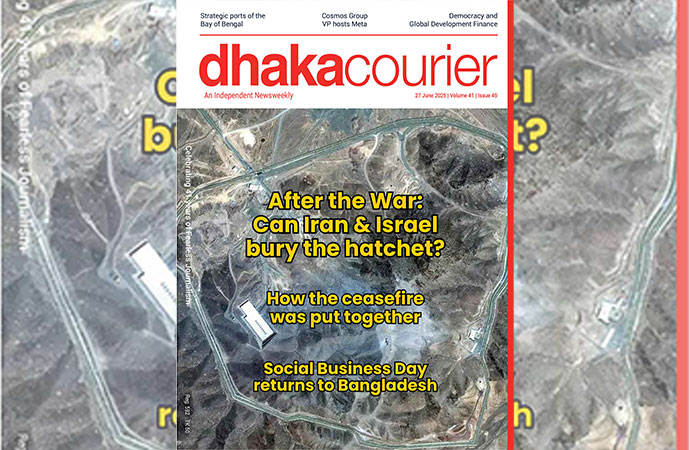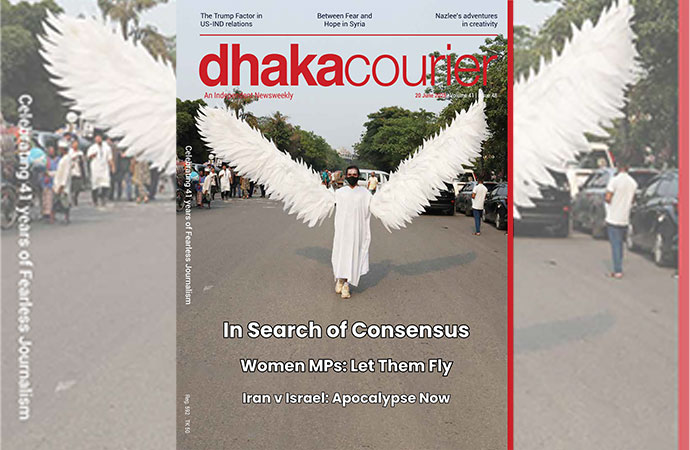Column

Past Olympic winners rolling the ball with children at school gymnasium.
It was back in 1964 that the summer Olympic Games came to continent Asia for the first time since the start of this global sporting event towards the end of nineteenth century. Organizing the grand sports gathering in Tokyo in that year uplifted the image of Japan in the world, more because of the post-World War II economic boom coincided with Olympic preparation and Japan was already making her mark as a leading producer of consumer items like watches and transistor radios. For many around the world, 1964 Tokyo Olympic was sort of a gateway to the country and its people, as through the Olympic games the world came to know more about Japan and the country's fascinating post-war recovery at a time when the word Internet was yet to come into use and television was just making its breakthrough as a principal media outlet for the mass. Much has happened since then in continent Asia and by now the summer Olympic Games had already been held in Seoul and Beijing as well.
However, Tokyo's second bid to invite the game to the Japanese capital in 2016 ended in failure and as the country had been facing economic slump, Japanese people had not been much enthusiastic about organizing an international sporting event that had already been seen by many around the world more as a white elephant with hardly any viable prospect of recovering the exorbitant amount that a host city needs to spend for the big show. But the failure as well as anxiety over big expenditure did not deter Japanese leadership from making a second attempt and that eventually proved to be a successful one. Despite the bidding success, the organizers since then have been bothered with the rising cost of expenditures related to Olympic preparation and in their attempts to scaling down the amount; they had to take a number of decisions that were not seen positively in other countries. The most controversial among such decisions was the cancellation of an already approved plan to build a new futuristic looking stadium designed by Zaha Hadid, the late Iraqi-British architect. It was supposed to replace the main Olympic Stadium, which was originally built for the 1964 Games. The Tokyo Olympic organizing Committee later opted for redesigning the old Olympic Stadium to make it suitable for 2020 Games. There had also been a few other minor controversies like the logo design. However, Tokyo could successfully overcome most of the hassles and the city is now looking forward to becoming another first in Asia by hosting the summer Olympic Games twice. The stage is now gradually being set for the big event that the central government and the metropolitan administration also intend to make a showcase of Japan's cutting edge technology.
The summer Olympic Games will be held for over a 15-day period during Japan's extremely unpleasant mid-summer. This is another headache for the organizers and they are continuously in discussion with various bodies to find out ways for easing the extra burden that athletes might be compelled to face. As more than one and a half year of countdown still awaits the Olympic, many are hopeful for a timely solution. The summer Olympic Games will be followed by a slightly shorter duration of sporting events for physically retarded people termed as the Paralympics.
A total of 33 different sporting events will be contested at the Tokyo 2020 Olympic Games, including a number of first time events like karate, skateboarding, sports climbing and surfing. 40 different venues in Tokyo and around Japan will be used for the game. The list includes a number of iconic venues that were used for 1964 games as well as newly constructed sporting arenas that are to serve as a model for innovative urban development. The national stadium, which was used as the main venue for the 1964 games, is now being rebuilt as a new stadium where opening and closing ceremonies will be held along with athletic events and football matches. The Olympic village is now being constructed by private contractors as a complex of residential buildings following the approved guidelines of Tokyo metropolitan government's urban development projects. The residential units that will be used by athletes during the games are to be renovated after the Olympics and sold as apartments.
Tokyo's campaign to host the 2020 games started in 2011, the year when Japan was hit by a devastating earthquake followed by tsunami disaster. The calamities triggered the accident at a nuclear power plant in Fukushima prefecture causing further damages leading to serious consequences. The situation prompted Tokyo bid committee also to focus on the power of sports to raise the spirit and determination of the residents of affected areas and provide them with hope and inspiration. In line with such standing, the Organizing Committee of Tokyo 2020 has also included among the venues two from the disaster- affected areas. Some of the football matches as well as group level matches of baseball/softball are to be held in Miyagi and Fukushima prefectures. Miyagi Stadium in Sendai city will host football matches, while Fukushima Azuma Baseball Stadium has been selected for Baseball/softball matches. Also to deepen the bondage between people of affected areas with the rest of Japan, a number of events are being organized on a regular basis. Such initiatives are to be continued well until the official start of the 2020 Olympic Games.
Tokyo metropolitan government is particularly keen on spreading the message of hope among the people of the disaster-affected areas and is periodically sponsoring special events where past Olympic winners are invited to join local young athletes in a variety of activities aimed at sharing the joy of sports. One such events that was held recently at an elementary school in the remote Fukushima village of Showa-mura provided children and their parents the rare opportunity of sharing time with Japan's six past Olympic winners and team members. The Olympians who participated at the event were swimmer Mai Nakamura, judoka Mika Sugimoto, triathlon athlete Noriyuki Nishiuchi, synchronized swimmer Risako Mitsui, member of the male volleyball team Nobuhara Saito and table tennis player Rika Saito. They mingled with the children and played with them at the school gymnasium before posing for a group photograph. And for the children of that remote village, getting a number of star athletes among them obviously served as an inspiration for nurturing the big dream of becoming leading sports personalities like the visitors.
(Tokyo, December 17, 2018)

























Leave a Comment
Recent Posts
‘Married to Journalism’: Adieu ...
The journalist community of the country united this week in bidding go ...
Reimagining the OST: ‘Utshob’ ...
One of the most successful Bangladeshi films in recent years, 'Uts ...
Harrowing stories of rescue emerge from Texas floods ..
The Resilience of World Trade
Heeding the Lessons of India’s “Emergency”
Sunamganj’s age-old boat market struggles as monsoon ..